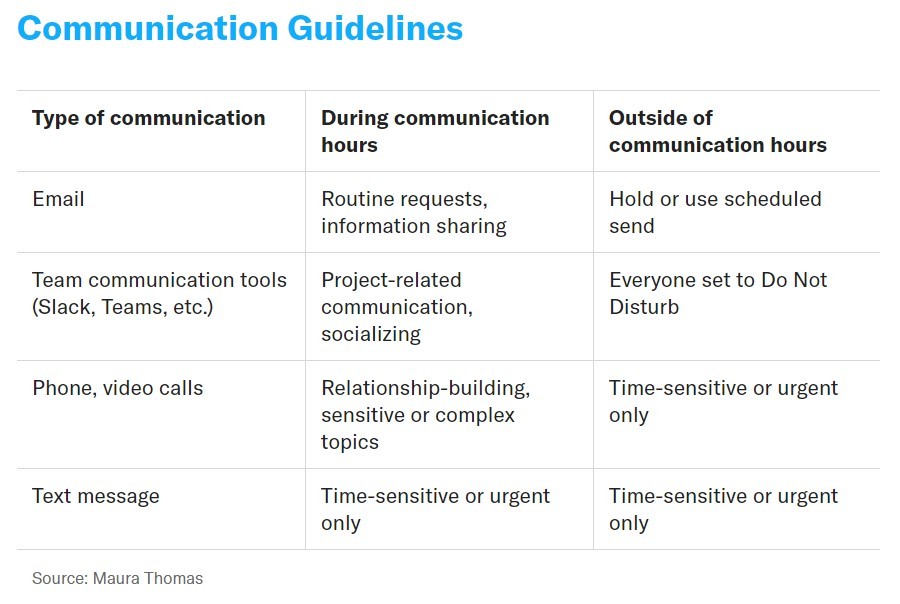Leaders need to act now to establish flex time and remote work policies and guidelines.
Fifty-seven percent of employers are now offering flex time, up from 39% at the end of March. At the same time, 62% of employed Americans are working from home. Given that employees have long been advocating for increased flexibility, this is one positive outcome of the COVID-19 pandemic, right? Not so fast.
Since the start of the COVID-19 pandemic, the average workday in the United States has increased by 40% – roughly an extra three hours per day. What’s more, a study by Clockwise finds that since the start of the pandemic, time spent in one-on-one meetings has increased by 24%, and time spent in “team sync” meetings has increased by 29%. Given the increase in time spent in meetings, it is unsurprising that fragmented time (blocks of time to work shorter than two hours) has increased by 11%, and 23% more workers have fragmented time.
In addition to increased demands from work, many people are also caring for children who are home and juggling homeschooling while schools and daycares are closed. At the same time, people are caring for elderly or sick family members, they are cut off from key relationships and sources of support, and everyone is dealing with the anxiety that comes from unprecedented uncertainty and disruption.
While flex time is giving people a fighting chance at managing increased demands on time and the blurred boundary between work and home, in the absence of a clear policy and explicit guidelines, flex time can lead to burnout – fast.
Given the speed at which the COVID-19 pandemic hit, few organizations have stopped to think strategically about remote work and flex time, create a policy, and to establish clear guidelines. Rather, remote work and flex time have evolved organically – and in a reactionary manner. Many organizations have outlined flex time employees being allowed to work flexible hours, while at the same time being available as needed.
Maura Thomas, a leader in corporate productivity and attention management, points out that once the “always-on” mindset takes root, it becomes difficult, if not impossible, to “reset” later.
People are burnt out; this matters
Why does this matter? Burnout costs between $125 billion and $190 billion every year in healthcare costs, and researchers estimate that workplace stress accounts for 8% of national spending on healthcare. More often than not, burnout leads to disengaged employees, who cost their employers 34% of their annual salary. Further, burnout is responsible for a significant amount of employee turnover, between 20% and 50% or more, depending on the organization.
One survey found that 45% of employees in the US feel burned out, with 1 in 4 feeling that way due to the COVID-19 pandemic. Another survey found that 14% of women and 11% of men are considering quitting their jobs due to work-family conflict related to the COVID-19 pandemic.
This data does not bode well, especially given that engaged employees are crucial to an organization’s ability to navigate disruption and chaos.
The need for a policy and guidelines
Resilience training, mindfulness, yoga, and flex time are all “solutions” to burnout. However, Christina Maslach, social psychologist and professor emerita of psychology at the University of California, Berkeley, points out that when we approach burnout as a people-problem rather than an organization-problem, we are approaching the problem from the wrong angle.
This brings us back to the need for organizations to establish clear guidelines and explicit policies when it comes to flex time and remote work.
Even as economies are beginning to reopen and stay-at-home orders are being lifted, many companies have already told employees that they should plan on working remotely at least through Labor Day and possibly longer. Other companies such as Google and Facebook have gone further, telling employees that they could be working from home until next year. Nationwide has gone so far as to shutter five offices and announce that its 4,000 will permanently work from home. At the same time, there remains uncertainty about when children will return to school and what that will look like. Flex time and remote are here for the foreseeable future – and more than likely, the future of work.
What can organizations do?
Organizations need to address the problem head-on. That starts with acknowledging the problem and then strategically looking at solutions that make sense for the organization.
It is important not to fall into the trap of cobbling together a solution. Leaders need to take the time to think through what flex time and remote work really means to the organization and then look at how the organization needs to be redesigned to support the vision.
Once a clear policy and explicit guidelines are created, it is crucial to align the leadership team. Once the leadership team is aligned, the policy and guidelines need to be communicated across the organization.
Finally, success depends on leaders modeling the behavior.
Here’s where to start
Setting parameters around communication is essential to a successful policy. Maura Thomas suggests establishing “communication hours,” conducting an inventory of all of the ways the organization communicates internally and externally and thinking strategically about how each of these channels of communication is used.
She provides this as an example:
 More people are working from home, and more organizations are offering flex time. While flex time is giving people a fighting chance at managing increased demands on time and the blurred boundary between work and home, in the absence of a clear policy and explicit guidelines, the burnout employees are already experiencing will only increase. This will negatively impact the ability of organizations to navigate the chaos and disruption created by the pandemic and to accelerate through recovery.
More people are working from home, and more organizations are offering flex time. While flex time is giving people a fighting chance at managing increased demands on time and the blurred boundary between work and home, in the absence of a clear policy and explicit guidelines, the burnout employees are already experiencing will only increase. This will negatively impact the ability of organizations to navigate the chaos and disruption created by the pandemic and to accelerate through recovery.
Leaders that think strategically about flex time and remote work, redesign their organization to support this vision, and take the time to establish clear guidelines and explicit policies will not only accelerate through to recovery faster than those who don’t, but they will also be better positioned for the post-pandemic future.







